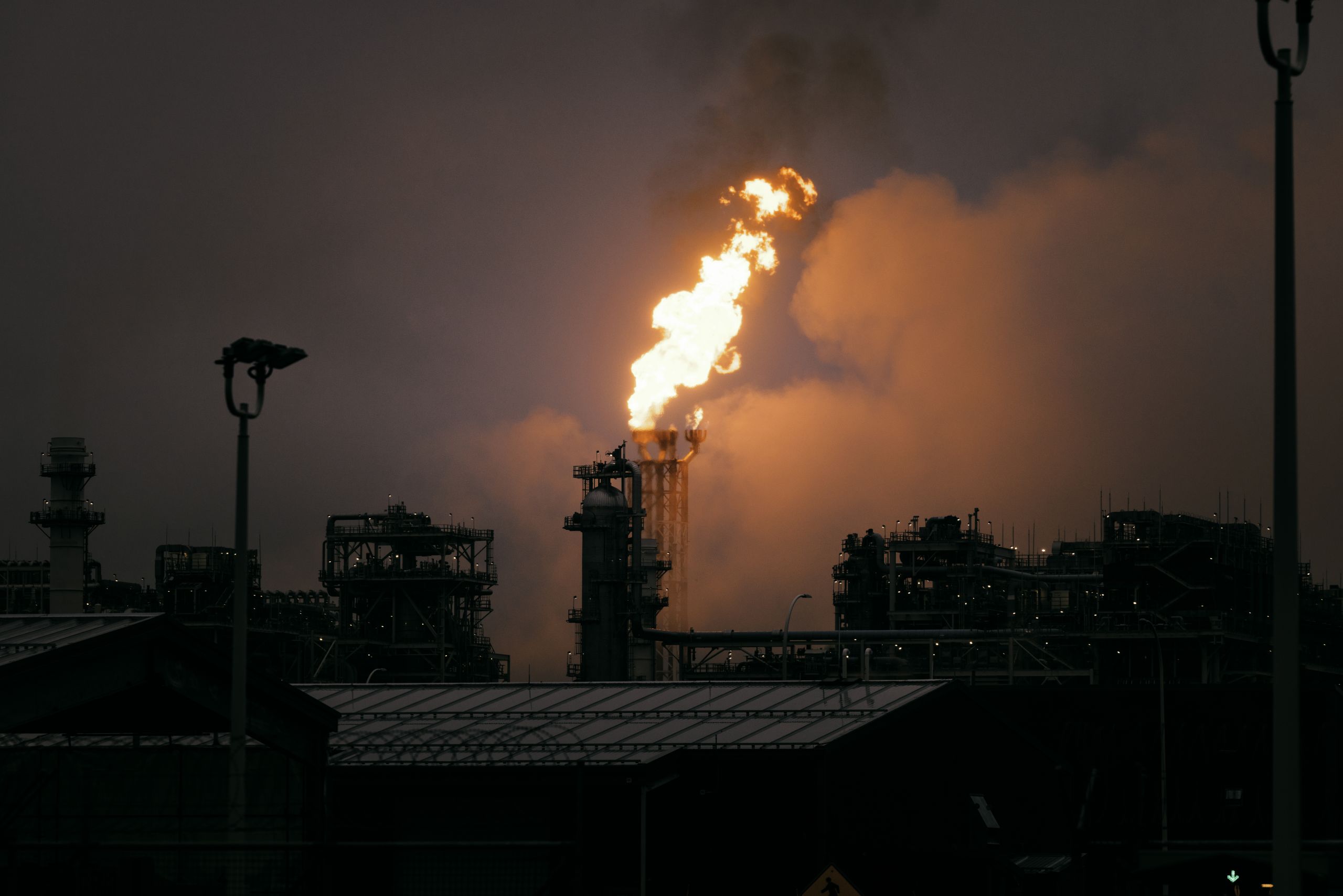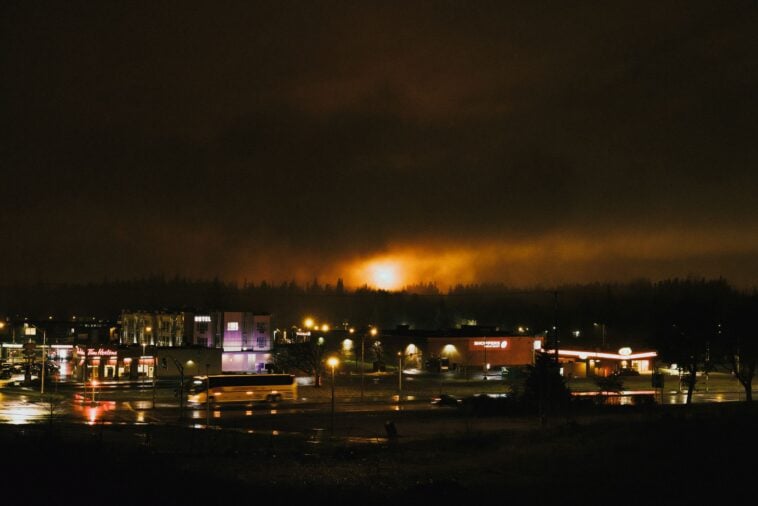By Matt Simmons, Local Journalism Initiative Reporter, The Narwhal.
Photography by Marty Clemens
Under heavy rain, an electronic sign by the side of the road in a small northwestern B.C. town warns passersby, “Flare height will vary.” It flashes to the next message: “Between 15 meters [sic] and 90.”
Kitimat, B.C., a coastal community about 1,400 kilometres north of Vancouver, is home to around 8,000 people — and Canada’s largest liquefied natural gas (LNG) processing facility. For the past 14 months, LNG Canada has been periodically burning excess or waste gas, a process known as flaring. At its highest, the flame is about as tall as London’s Big Ben or New York’s Statue of Liberty — not just the statue’s torch but the whole lady herself.

“We are home to the world’s fourth largest reserves of natural gas and we have the potential to supply 100 million tonnes annually of new LNG exports to Asia.”
Prime Minister Mark Carney
Speaking in the neighbouring community of Terrace, B.C., on Thursday, Prime Minister Mark Carney announced another LNG export facility — Ksi Lisims LNG — will be referred to the federal government’s newly established Major Projects Office. Projects flagged to the office are developments the Canadian government is endorsing as part of its efforts to diversify trade away from the United States, and considering fast-tracking through certain environmental and other approvals.
“We are home to the world’s fourth largest reserves of natural gas and we have the potential to supply 100 million tonnes annually of new LNG exports to Asia,” Carney said.
Ksi Lisims LNG will be built about 200 kilometres north of Kitimat and supplied by the 800-kilometre Prince Rupert Gas Transmission pipeline, yet to be built. At full capacity, it will export around 12 million tonnes of LNG per year.
Meanwhile, the flare in Kitimat has been impacting the lives of residents and raising concerns about health and climate impacts. On social media, some Kitimat residents are grieving the loss of the night sky, posting photos and videos of a dull orange glow looming over the town. Others worry about the impact of emissions on their health, citing research on toxins emitted during LNG operations. Many have compared the near-omnipresent flame to the “Eye of Mordor,” from J.R.R. Tolkien’s Lord of the Rings.

Natural gas is mostly composed of methane, a powerful greenhouse gas that is invisible and odourless. Methane, which is responsible for around one-third of global warming since the industrial revolution, traps 80 times more heat than carbon dioxide over a 20-year period. In other words, methane emitted now — or leaked into the atmosphere from industrial infrastructure — will directly increase the likelihood of climate disasters like wildfires, floods and droughts over the next two decades.
“Flaring is a provincially regulated safety measure that ensures the controlled, efficient combustion of natural gas during specific operational phases.”
LNG Canada
Burning excess gas, as LNG Canada is, reduces the amount of methane that ends up in the atmosphere by instead turning it into carbon dioxide and other toxins — meaning it still comes at a cost for locals, and the planet.
LNG Canada — a consortium of foreign-owned fossil fuel companies led by multinational oil and gas giant Shell — maintains flaring activity is a regular part of start-up operations and says its emissions fall within provincial standards.
“Flaring is a provincially regulated safety measure that ensures the controlled, efficient combustion of natural gas during specific operational phases,” LNG Canada said in a public notification.


On Nov. 9, the consortium told the public that “flaring associated with the start-up … will be extended beyond the originally anticipated timeframe” and warned residents this would mean “intermittent” noise and emissions. LNG Canada previously offered to pay to temporarily relocate some residents living close to the flare, according to a leaked document reviewed by The Narwhal and confirmed by the consortium.
The facility is currently in its first phase, operating four gas-powered turbines that supercool the gas to -162 C, reducing its volume for transport. An already approved and permitted second phase would double the plant’s production, adding another four turbines, corresponding flaring facilities — and, presumably, more warnings to residents.




